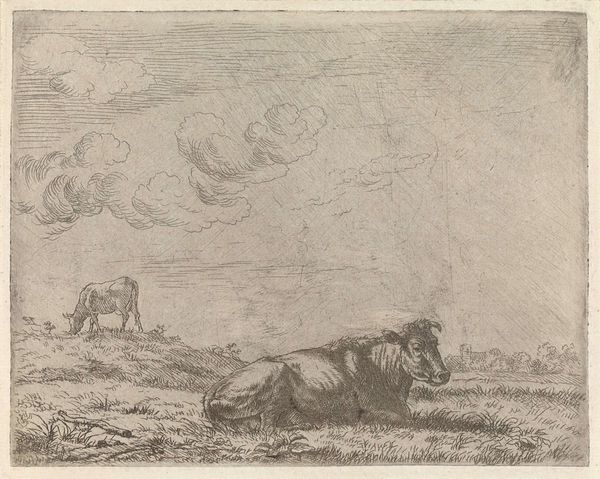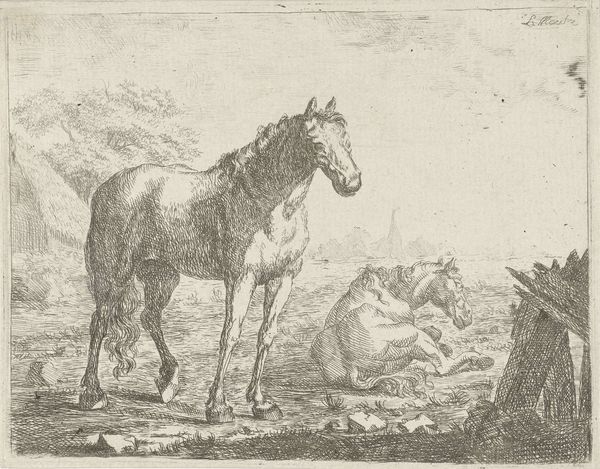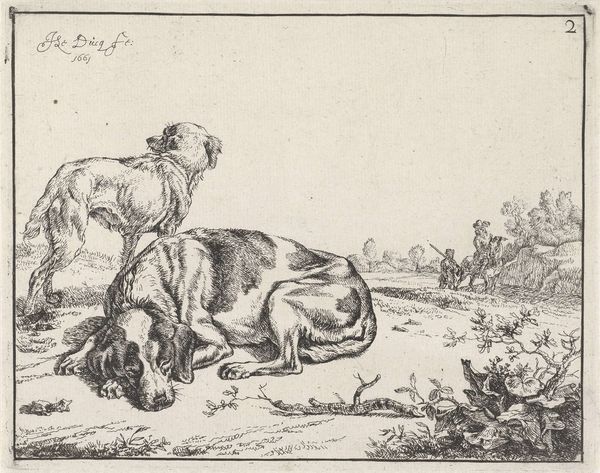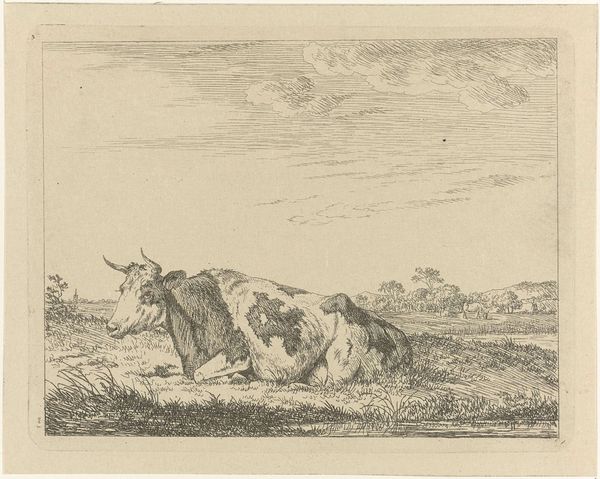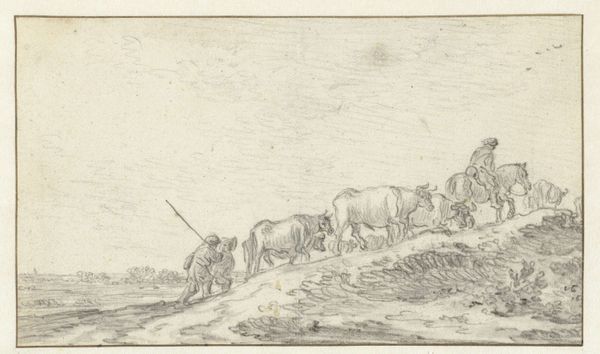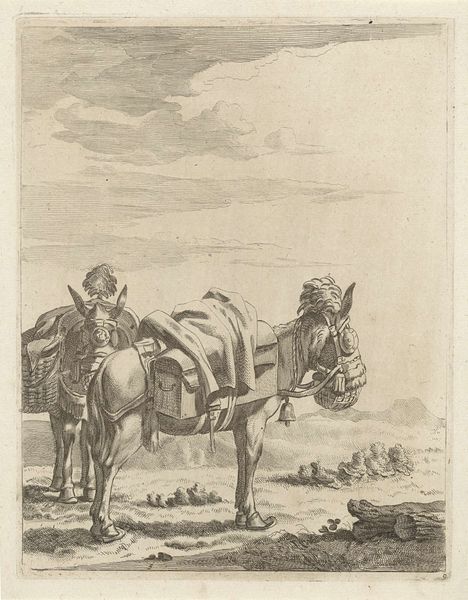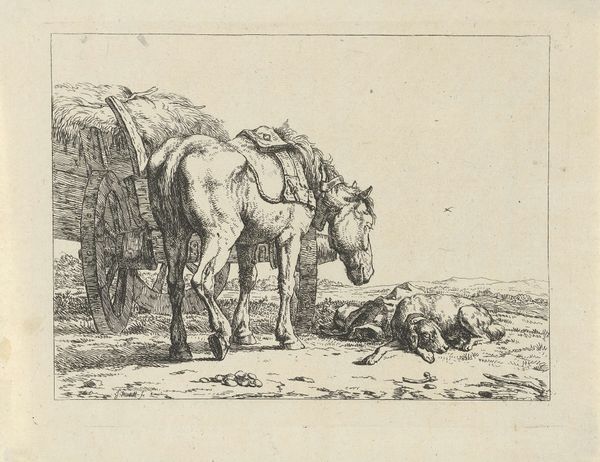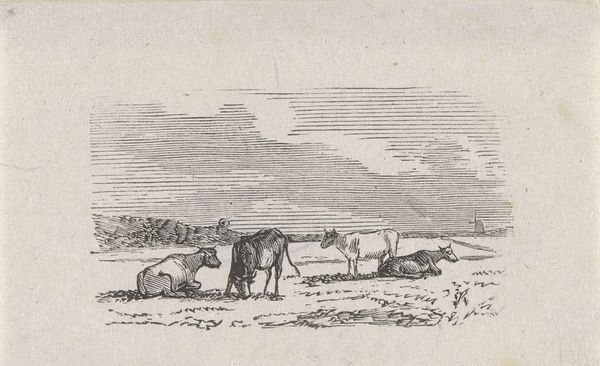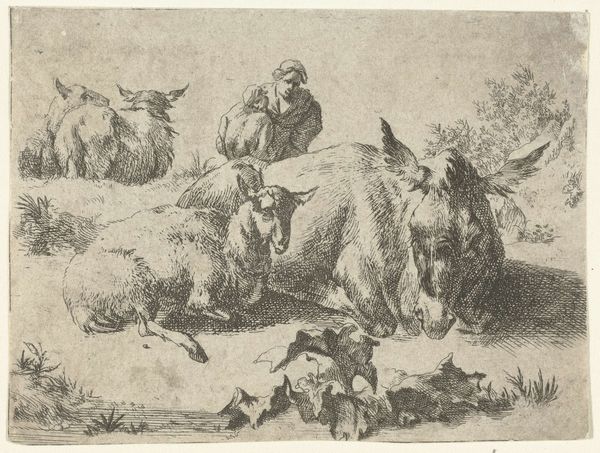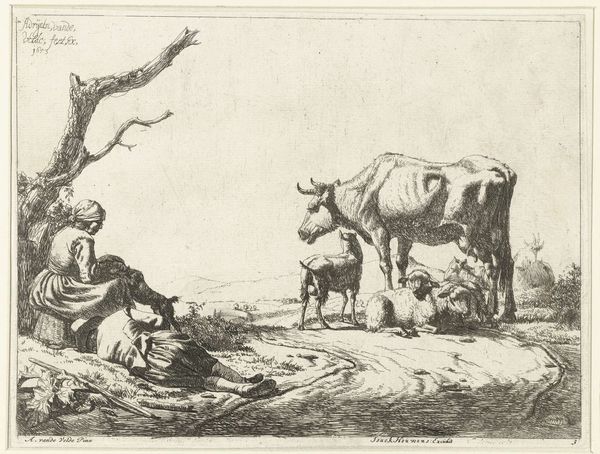
drawing, print, pen, engraving
#
drawing
#
baroque
#
animal
# print
#
pen sketch
#
old engraving style
#
landscape
#
pen
#
genre-painting
#
engraving
#
realism
Dimensions: height 115 mm, width 149 mm
Copyright: Rijks Museum: Open Domain
Marcus de Bye created this etching of two cows lying down sometime in the mid-17th century. Holland was enjoying its Golden Age, where the rising merchant class fueled unprecedented artistic production. Now, why cows? In Dutch Golden Age painting, cattle were more than just farm animals. They symbolized the nation’s prosperity, peace, and the virtuous life of the countryside. The Dutch had recently won independence from Spain, and their economy was booming through international trade and agriculture. The art market itself was thriving, governed by powerful guilds and academies. Artists were acutely aware of their patrons' tastes. De Bye’s pastoral scene catered to a burgeoning middle class eager to display their wealth and national pride through art. To understand this period better, we can look at archival records of merchant activities and the structure of art guilds and academies. Art then becomes a window into social values.
Comments
No comments
Be the first to comment and join the conversation on the ultimate creative platform.

